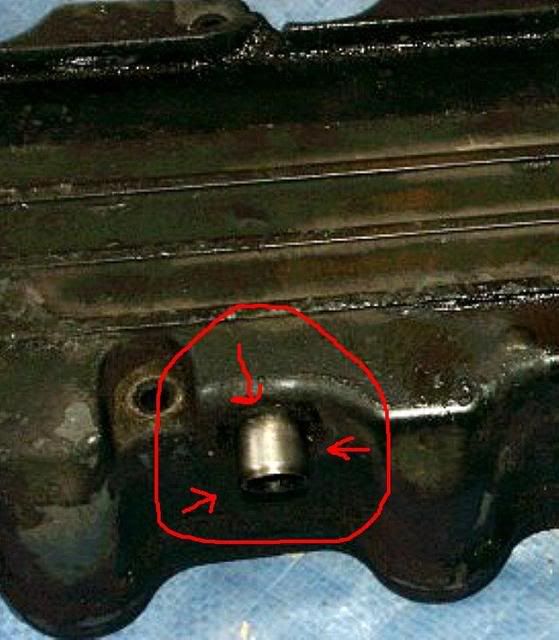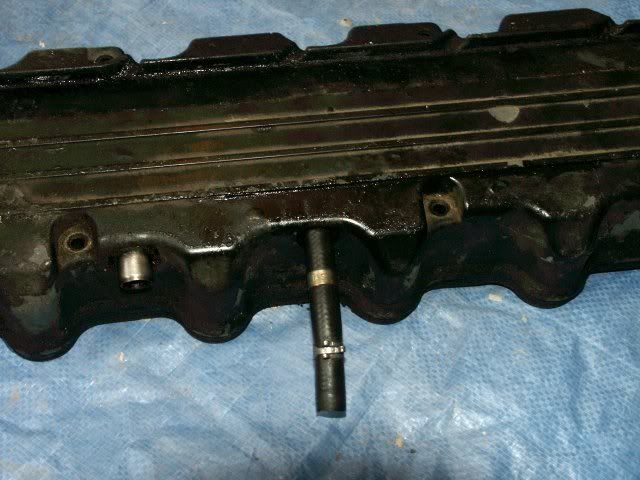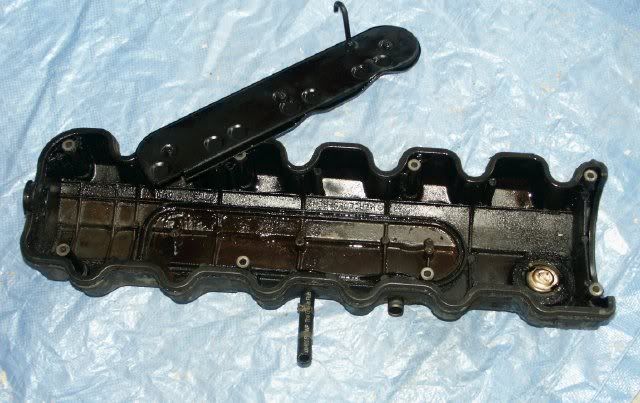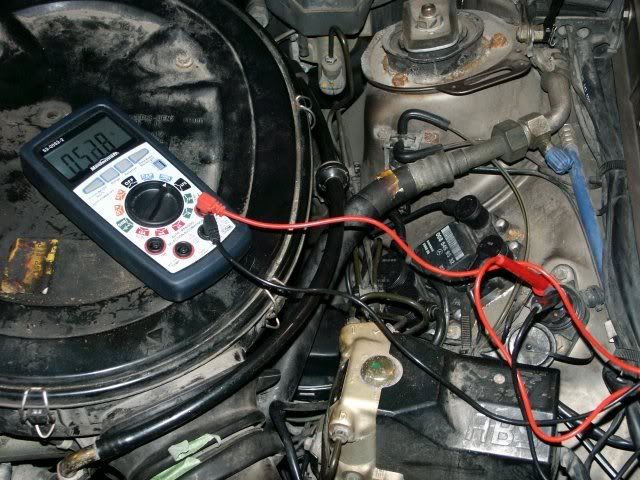Hi Guys,
Yeap, I solved my SSS issue 2 days ago but I wanna wait just incase there is other Gremlins in that car.
Most of you know that I'm having a stalling issue with my 190e 2.6 engine 1991, refer to the other thread I post on this issue.
Resume:
This car is stalling when the outside temp. goes to +/- -20C°, on decelaration to make a stop or sharp turn. He will always do that when the engine temp reach 80C°. I have to wait +/- 15 minutes and floor the throttle to re-start the engine. After I re-sart the engine sometime the idle will surge from 400 to 1500rpm, if I put the car in D surging stop.
This SSS issue is going on since winter 2005-2006 and it doesn't get worst or better with the time. Do I have to say that at -20C° with a small wind from the west my troubleshooting time outside on a street corner is about 5 minutes before the blood in my brain turn into slush, my finger into wood piece and all my body start moving like Pinnochio. All that say let's moved on.
This year I really want that car to be fix, so I built the pulse code reader to be able to read fault code on my car if any, I also invest a big 25$ on a multimeter able to read duty-cycle.
With duty-cycle meter I was able to know that my car is running rich at engine temp 80C°, the duty cycle was 20-29%. After the car stall and I was able to re-start sometime the mixture was playing between 5-10%. That's rich, this is when the idle start surging.
With the Pulse reader I was able to read the following code after the car stall.
Code #7 : TNA signal(rpm) read by CFI control module.
Code #27: Data exchange between CFI control module and ignition control module interrupted.
So these 2 code lead me to perform test on Hall Effect Sensor, Crank Position Sensor, EZL ignition control module, Coil, Cap, Rotor, Spark Plug, Wires, Reference Resitor, EHA, all the ground.
I also perform test on part that have nothing to do with code 7 and 27 like ICV, Wot, deceleration shut off, coolant sensor, air flow sensor, intake air sensor and many other parts.
All of them check good or if you like it better they are within the spec.
The only glitch I can find was the Crank Position Sensor he was given me a wierd voltage so I replace it with a new one. For more info refer to my post on Crank Position Sensor.
No, this was not the problem the car was stalling the next morning at the same convenience store. The guy there pay me a coffee and tell me if he have a car like this one he'll throw it on a rock pile.
I was at an hairline to parting out that car and sell it part by part.
I took the decision to forget about the 2 code and concentrate myself on the duty-cycle. Saying to myself the 2 codes might be the result of something else the engineers never think of.
So what is telling the CIS-E control module to lean or enrich the mixture ?
You're right the O2 Sensor, here's a new hunt, last weekend I start testing the O2 sensor and was unable to find the right way to test it. After numerous test that prove nothing I find 2 test that tell me if the CIS-E is able to rich the mixture, the second test to tell me if the CIS-E is able to lean the mixture. Playing with the O2 Sensor itself I was able to brew to other test that will tell me if the O2 Sensor is able to read the exhaust, rich or lean. My O2 Sensor and my CIS-E control module are in working order and pass those test.
If you want to know more about those test refer to this post:
O2 Sensor Under Deep Test...
The test I'm talking about are Test #6, #7, #8, #9, it will take you about 15 to 20 minutes to perform this test.
How come those 2 buggers work perfectly and they cannot adjust the mixture ?
Dan(logonbob) who follow the thread on the O2 Sensor open me a new window when he tell me to look for any crack in the exhaust before the O2sensor. A crack could let the air in the exhaust and than my O2 Sensor will tell the CIS-E to rich the mixture (to much air).
Raise the car with my floor jack, crawl under the car with my light, engine running, I try to find a small leak, from the O2 Sensor to the manifold every thoushand of an inch was inspect. Nada, nothing, not even an hairpin hole that will let the air in the exhaust.
I lower the car take a look at the manifold for hairpin hole or small leak at the gasket, nothing. I look at EGR valve, this one might stick open just a bit and let air into the exhaust. I take it Off, clean it with carb cleaner and make sure it closed tight.
Start the engine, same problem duty-cycle at 20 to 29%.
Ok what's next, I look at the air pump for emission control and ask myself how this thing work.
Get my shop manual to find out, nada, nothing, not a word about that pump, look at the CD, same thing.
I get the info by AlldataDIY on how this pump work, test it and it work like it should. I notice there is a couple rubber hose on the circuit of that pump get them off to a close inspection for hairpin hole. Nada, nothing.
After all those test, I was standing in front of the car, engine running, looking at my duty-cycle meter 20 to 29%. I have no clue to what's next, the rock pile is coming, the more I think what's next the only thing who come to my mind was German Thistle rolling in the desert.
I put my hand on the valve cover and like an automate not knowing what he is doing, put my thumb to the open pipe who normaly go the air filter.
What the hell is this, I feel pressure under my thumb, there is no way, event if it is a German car, I should feel vacuum at that place not a pressure.
Here's the photo:

Next to this pipe there is an other small hose who go to the intake here's the photo:

As soon as I unplug this pipe the duty-cycle start to climb and reach 50% in no time.
I take the valve cover off and with a small piece of hose try to blow or suck in that hole nothing, it is completly block.
I took off the baffle inside the valve cover:

I poor carb cleaner in the small hole on the picture.

This hole have a small orifice in it, I start with a small drill .032inch and end it with a clear orifice at .080 inch. No more gung in it I could saw bare metal.
I put the valve cover on, start the engine, guess what ?
A nice vacuum at the valve cover outlet who go to the air filter and a nice duty-cyle between 49 to 52%.
Dave(slk230red) and Dan(logonbob), this photo are for you guys:

The problem was not air in the exhaust but was a motor who cannot breath.
You should see the guy at the convenience store yesterday morning when I drive to the gaz pump with the car, without stalling.
He say, hey you fix your car?
Yeap, I got the gremlins.
Then he ask me:
My brother in law have a Honda, is at the garage for the last to week and the guys there could not make it run. Do you want to take a look at it ?
I put the best smile I can on my face and answer.
Tell him to put his rice car on the rock pile.
We both start laughing.
I know I'm the only one with that small hole block but next time you open your hood just unplug the hose that goes to you air filter and put your thumb on the end at the valve cover and feel the vacuum of it, just so you know your is ok. If you don't feel the vacuum,well you're the only with this trouble since I fix mine.


Max
PS. If you're living in the Montreal area and experience SSS with a 190e I might be interested at troubleshooting your car at my place or at your place, just PM me.